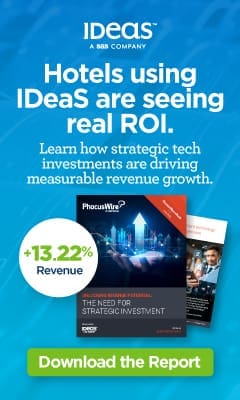
Bloomberg Businessweek recently reported (January 24, 2024) that $1,000 per night was pretty much the de rigueur price point for any hotel room befitting real luxury. Of course, inflation is a contributing factor to this with costs being paid forward to the consumer, but there are many others of significance.
Without going into an entire dissertation on secular trends, there are a plethora of guests from all walks of life and nationalities who are ‘price insensitive but highly experience sensitive’. That is, they are willing to pay a premium to get the most out of their time away from home, with a price tag of over $1,000 per night serving a quick litmus test that the services and amenities on hand will match or exceed those expectations. There’s a lot of psychology at work here, as we dissect the various inputs, outputs and property examples in our ongoing column ‘The Mille Club’ with ‘mille’ stemming from the Italian for a thousand.
Another issue related to this litmus test is that the very word ‘luxury’ has become overused and thus diluted in its connotation. If every brand purports to be luxury, then what’s really luxury? That is, how do travellers in this upper-level snack bracket – HNWI, business executives or simply those looking for a special occasion – identify which hotel properties consistently deliver value at these elevated price points?
Certainly not from the OTA ratings, where a property can attain a 4.5+ star rating by offering clean sheets, relatively quiet air conditioning, free waffles with artificial maple syrup for breakfast and service with a smile (note: we emphasize that this last one will always be a hallmark of hospitality no matter the brand segmentation). Nor will TripAdvisor provide luxury guests with sufficient data as their ratings are guest-based, and those guests may not necessarily judge a luxury property appropriately on their own experience set.

Enter Forbes Travel Guide, recognized as the world leader in setting the standards that must be achieved for a hotel to be classified as bona fide luxury. Forbes has been in the ratings business since 1958, and with a FTG star rating, there are no half or part levels. A property is ranked as five or four-star, or recommended, with no half measures or leniency mechanisms afforded; you simply are or are not luxury.
To achieve a FTG rating is truly a rarity and an achievement that a property should cherish. Of the roughly 700,000 hotels and resorts in the world, only 0.002% of properties attain this distinction. For the Mille Club traveler who is ever vigilant of the latest luxury hotel openings or renovations in each destination, FTG ratings and magazine coverage articles are essential tools in their product search criteria.
To learn more about this process and how these luxury standards are maintained, we sat down with Amanda Frasier, Forbes Travel Guide’s President of Ratings, to discuss how FTG ratings have evolved with the times and continue to recognize the needs of luxury hotel guests.
How exactly has the Forbes Travel Guide rating system changed over time?
Our standards have certainly kept pace with the guests’ expectations. The ‘bar’ for the four- and five-star ratings rises annually. A property that may have achieved a five-star or even a four-star rating half a dozen years ago would probably not maintain this level today without continuous improvements. Of course, physical systems need to work flawlessly and service needs to meet the highest standards. But we go beyond this. Our reviewers are experienced, and in many instances are former luxury hotel GMs. They understand how a hotel works and what defines a luxury property. They are looking for a service that is ‘effortless’. In other words, staff is not just going through the motions of service delivery but is performing these tasks in such a way that the guest feels that it is second nature.
Can you explain to our readers what this superior service level is?
There is a certain magical moment that comes when a hotel’s staff is so attuned to the guests that they can predict what the guests will need. This effort evolves from experience. It starts with a management team that empowers and encourages staff to anticipate their guest needs and respond accordingly. It can be simple things such as noting their favorite beverage and having it ready to serve, or a turndown service that includes some special elements that reflect the guests’ next day. We call this anticipation of needs a true passion for service.
How has guest experience entered the Forbes star rating vernacular?
Today, luxury travel is all about experience. The base levels of accommodations are a given. The Forbes five-star guest can be guaranteed a perfectly comfortable room and equivalent service levels. But we’re looking for more. We call it, for easy reference, an Instagrammable event or moment. In other words, a stay on your property that is worthy of social media commentary, something that reflects a unique event.
What are the implications for hoteliers hoping to either achieve a five-star rating or maintain their five-star rating?
Never give up. Hire and embrace a team that has a true passion for your guests. Embed the essence of hospitality into every aspect of your business, from housekeeping and valet to concierge and F&B. Decentralize and support decision-making at the guest-contact level. Share your experiences and learn. As a GM or operations manager learn to trust your staff. Be a cheerleader and mentor. You will be amazed at what your team can deliver.
This article may not be reproduced without the expressed permission of the authors.




















